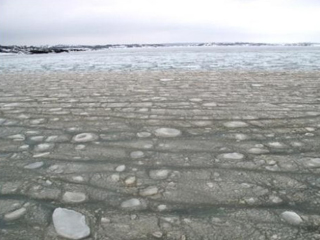Detecting & Tracking Oil in Ice

The detection and tracking of oil in ice is one of the major technological challenges facing the Arctic spill response community. Although various techniques have proven successful in certain conditions, there is currently no universally applicable tool.
A range of different sensors on satellite and airborne platforms can be used to detect oil on water with various limitations. For example, passive sensors that operate in the visible spectrum are useful in daylight hours and in clear sky conditions, which are not the norm in the Arctic. Radar does not require daylight and can penetrate cloud cover. These sensors detect oil spills by utilising the physical principle that oil dampens wind-generated capillary waves on the sea surface, thereby reducing the radar backscatter signal. However, ice can have a similar dampening effect, confusing the interpretation of the imagery. Many imaging satellites follow a sun-synchronous orbit so as to cover a large portion of the surface of the earth, this means there can be limited time windows where satellites may be overhead an oil spill to acquire an image, and therefore do not provide continuous coverage. Airborne sensors can be more versatile in that they fly under cloud cover and can focus on an area of interest for the majority of the flight. Airborne sensors are however limited by the regulatory challenges of accessing Arctic airspace, pilot availability, operational health and safety considerations, communications challenges, and a general shortage of suitably-equipped aircraft in the far north.
The most promising technique for the detection of oil in or under ice is ground-penetrating radar (GPR). Surface-carried units afford better penetration than airborne, but are large and heavy, and a trade-off must be made between penetration and resolution. GPR can detect oil accumulations greater than ~2.5 cm in thickness, but not thin slicks or oil trapped under new ice, young ice, first year ice, rafted ice, rubbles or ridges, or ice thicker than ~2 m (for surface-carried units, or ~1 m for airborne units).
High sensitivity ethane sensors can detect volatile compounds evaporating from freshly spilled oil (hours to days post-spill in the Arctic, depending on the rate of weathering). Trained dogs may also be able to reliably detect relatively small volumes of oil under ice or snow, but further field testing is needed.
